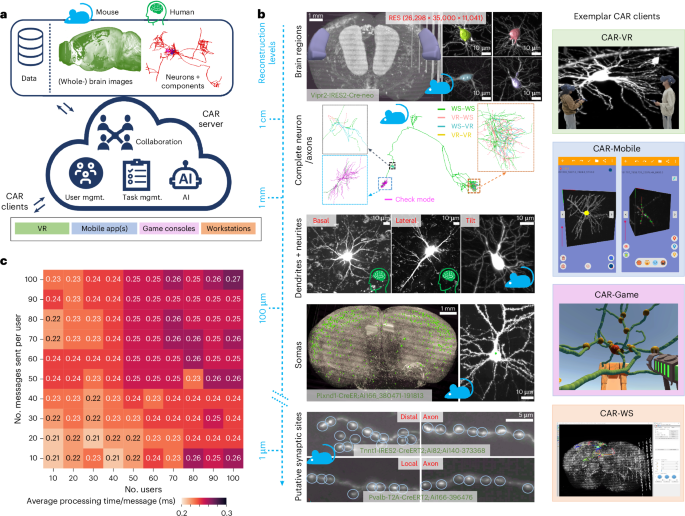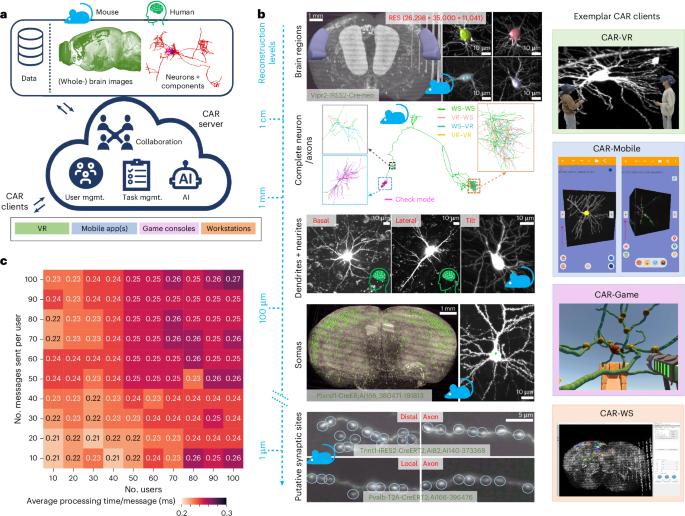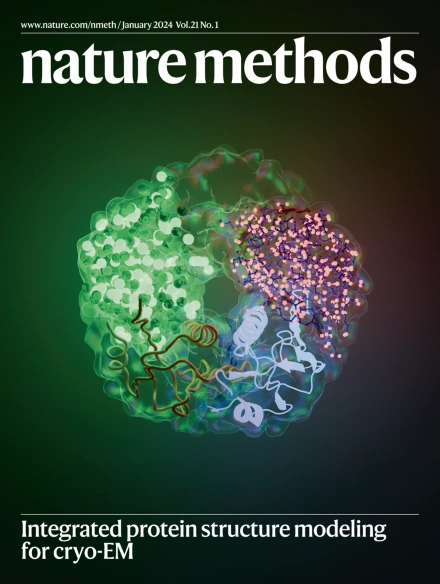Collaborative augmented reconstruction of 3D neuron morphology in mouse and human brains
IF 36.1
1区 生物学
Q1 BIOCHEMICAL RESEARCH METHODS
引用次数: 0
Abstract
Digital reconstruction of the intricate 3D morphology of individual neurons from microscopic images is a crucial challenge in both individual laboratories and large-scale projects focusing on cell types and brain anatomy. This task often fails in both conventional manual reconstruction and state-of-the-art artificial intelligence (AI)-based automatic reconstruction algorithms. It is also challenging to organize multiple neuroanatomists to generate and cross-validate biologically relevant and mutually agreed upon reconstructions in large-scale data production. Based on collaborative group intelligence augmented by AI, we developed a collaborative augmented reconstruction (CAR) platform for neuron reconstruction at scale. This platform allows for immersive interaction and efficient collaborative editing of neuron anatomy using a variety of devices, such as desktop workstations, virtual reality headsets and mobile phones, enabling users to contribute anytime and anywhere and to take advantage of several AI-based automation tools. We tested CAR’s applicability for challenging mouse and human neurons toward scaled and faithful data production. Collaborative augmented reconstruction (CAR) is a platform for large-scale reconstruction of neurons and other cells from multi-dimensional imaging datasets. It can be accessed from a variety of devices simultaneously for efficient and accurate reconstruction.


小鼠和人类大脑中三维神经元形态的协作增强重建。
从显微图像中对单个神经元复杂的三维形态进行数字重建,是个人实验室和以细胞类型和大脑解剖为重点的大型项目所面临的重要挑战。无论是传统的手动重建还是基于人工智能(AI)的最新自动重建算法,这项任务都经常失败。在大规模数据生产过程中,组织多名神经解剖学家生成并交叉验证与生物相关且相互认可的重建结果也是一项挑战。基于人工智能增强的协作群体智能,我们开发了一个用于大规模神经元重建的协作增强重建(CAR)平台。该平台允许使用台式工作站、虚拟现实头盔和手机等多种设备对神经元解剖结构进行沉浸式交互和高效协作编辑,使用户能够随时随地作出贡献,并利用多种基于人工智能的自动化工具。我们测试了 CAR 在挑战小鼠和人类神经元方面的适用性,以实现规模化和忠实的数据生产。
本文章由计算机程序翻译,如有差异,请以英文原文为准。
求助全文
约1分钟内获得全文
求助全文
来源期刊

Nature Methods
生物-生化研究方法
CiteScore
58.70
自引率
1.70%
发文量
326
审稿时长
1 months
期刊介绍:
Nature Methods is a monthly journal that focuses on publishing innovative methods and substantial enhancements to fundamental life sciences research techniques. Geared towards a diverse, interdisciplinary readership of researchers in academia and industry engaged in laboratory work, the journal offers new tools for research and emphasizes the immediate practical significance of the featured work. It publishes primary research papers and reviews recent technical and methodological advancements, with a particular interest in primary methods papers relevant to the biological and biomedical sciences. This includes methods rooted in chemistry with practical applications for studying biological problems.
 求助内容:
求助内容: 应助结果提醒方式:
应助结果提醒方式:


